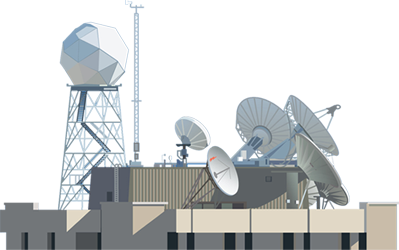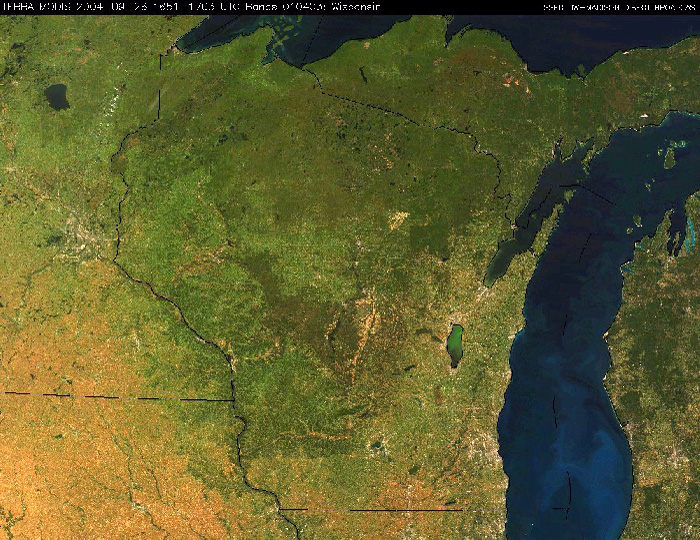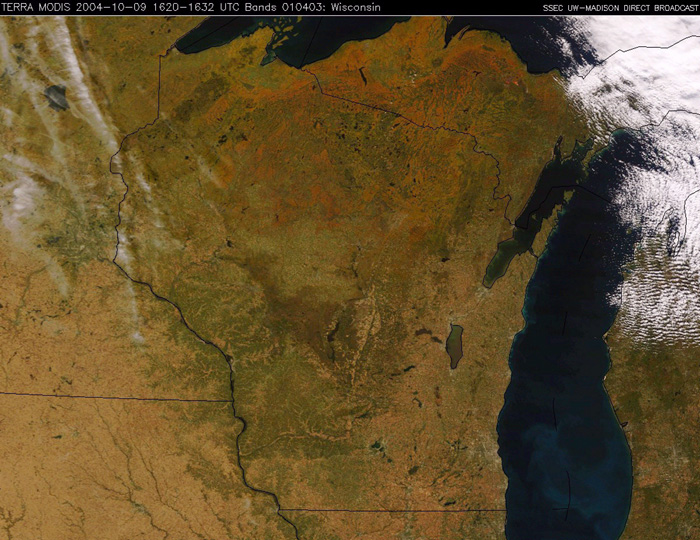Monitoring the Global Environment
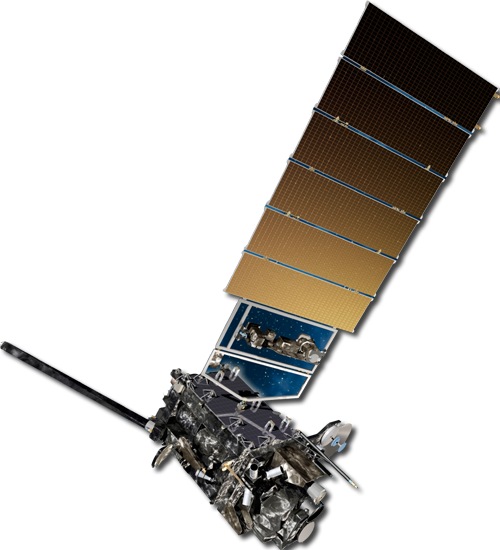
POES Monitors the Pulse of the Planet
In late 1999, NASA launched the first in a series of new Earth Observing Satellites (EOS) equipped with state-of-the art instruments to observe the Earth as a system and monitor global environmental changes over time. The EOS flagship spacecraft, called Terra flies in a polar orbit, descending across the equator in the morning when cloud cover is at a minimum and its view of the surface is least obstructed. This is because most of the Earth's land is in the northern hemisphere. Later, in May of 2002, the Aqua spacecraft was put into an ascending polar orbit timed to cross the equator in the afternoon and view the Earth's oceans when cloud cover is usually at a minimum. In July of 2004, NASA launched Aura to study the Earth's ozone, air quality and climate. These three spacecrafts kick off the Earth Observing Satellites series designed to measure global climate change over first two decades of the 21st century.
Here are two images taken by a MODIS radiometer on the Terra and Aqua satellites. It is striking to see that the 2003 fall colors in Wisconsin change very quickly from green to reds in just four days, probably due to a dry spell in July and August.
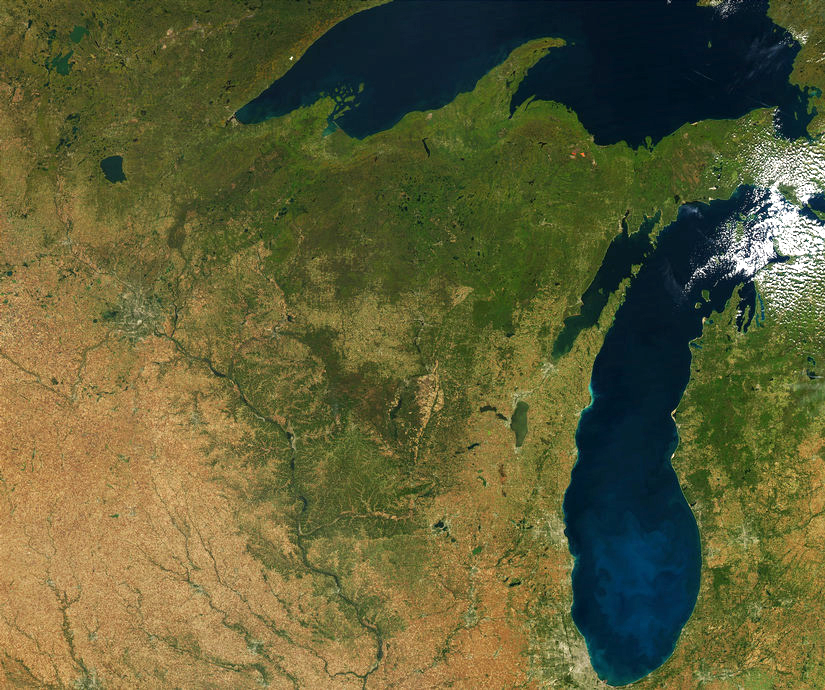 |
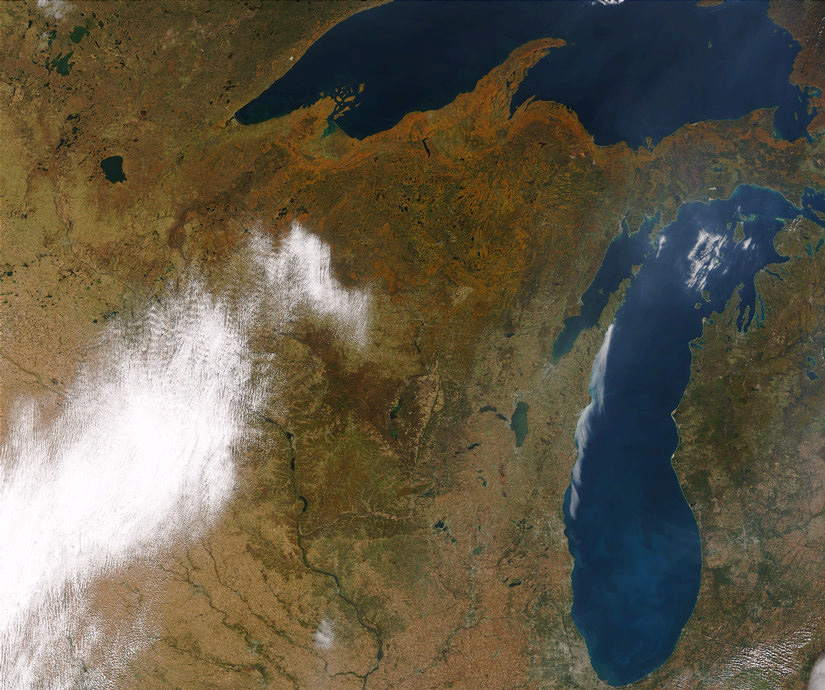 |
| Aqua transmitted this image on October 6th, 2003 at 2pm | Terra transmitted this image on October 10th, 2003 at 10am |
Below are two more MODIS images that show the fall colors took a little longer to change in 2004.
| 7/ 15 |
